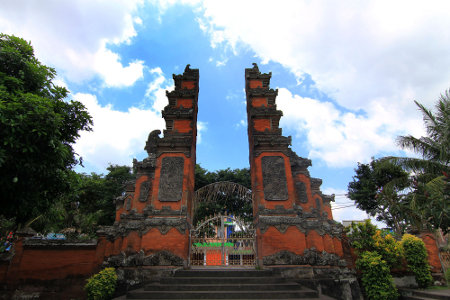The State Museum of West Nusa Tenggara

State Museum
The State Museum of West Nusa Tenggara holds a collection of some 7,000 artefacts and offers a comprehensive overview of Lombok History and traditional Sasak Culture.
The collection includes significant works of art as well as traditional crafts such as pottery and basket weaving, ceremonial costumes, weapons and archeological remains.
It will be of special interest to Dutch travellers, with a lot of historical information from the time when Mataram was an important port town for the European spice trade.
The Museum is located in Ampenan and is open Tuesday to Sunday from 8am til 3pm. It is open from 8am til 11am Friday to accomodate Friday prayers.
Sweta Market

The Sweta Market is the largest market in Lombok, offering tourists and locals a lively, traditional market atmosphere with a wide range of genuine, hand crafted items as well as fresh produce including locally grown herbs and spices.
And best of all, as it is a “real” market, ie not geared solely to tourists, prices are unbelievably cheap, especially when compared to similar markets in the tourist areas of Bali. Indeed, many Balinese entrepreneurs buy here to take back and sell at marked up prices.
Locally made pottery, wicker baskets and jewellery are in plentiful supply here as well as songket, traditional hand-woven cloth threaded with gold and silver. The artisans and craftspeople who make these items, are, in many cases women, who come from villages that have been specialising in a specific craft for generations, if not centuries, so you can be assured that you are buying items of real quality.
Many traders will even help with overseas delivery at very reasonable prices.
The Sweta Market is located next to the bus terminal, about 15 minutes drive from Mataram City and is close to the historic town of Narmada. The market is open most days.
Narmada Water Park

Constructed by King Anak Agung Gede Ngurah Karang Asem in 1727, Taman Narmada is one of the oldest historical sites in Lombok.
It is a replica of Mount Rinjani’s summit and the crater lake which, to this day, is still an active volcano.
Apparently, as the king became older, he could not regularly perform his pilgrimage to the summit of this 3,726 metre mountain, (the second highest peak in Indonesia, it is a challenge to modern day mountain climbers) so he built Taman Narmada, about 11 kilometres away to the east of Mataram.
Inside the park, he constructed the Segara Anakan to represent the mountain and a pool to represent the lake.
It is said that the king spent plenty of time in Narmada’s beautiful garden to relax and to worship the Hindu god, Lord Shiva.
There is a natural spring by the pool that Hindis believe to be the Fountain of Youth and the site attracts loyal followers throughout the year.
Pura Lingsar

This large temple compound is the most important religious site in Lombok.
It was built in 1714, (again by King Anak Agung Gede Ngurah Karang Asem) and is set amongst beautiful, lush rice fields.
It is unique in that it is a multidenominational place of worship, with a temple for Balinese Hindus (Pura Gaduh) and one for followers of Lombok’s mystical take on Islam, the Wektu Telu religion.
Accordingly, it serves as an important symbol of unity between the island’s different religious faiths.
As an example of this, Hindu worshippers at Pura Lingsar refrain from eating pork on Muslim holy days as it is considered a forbidden meat and followers of Wektu Telu don’t eat beef on Hindu holy days as the cow is considered sacred by Hindu’s.
Pura Lingsar is located 8km east of Mataram in the village of Lingsar.
Pura Meru

Pura Meru is located on Jalan Selaparang, 2km from the city centre.
Pura Batu Bolong

Pura Batu Bolong is the oldest Hindu Temple in Lombok and predates Balinese occupation on the island by about 200 years.
It was built in 1533 by the East Javanese rishi (wise man) Dang Hyang Dwijendra.
Dwijendra was a prominent religious figure in his time and founder of Shaivite Hinduism which is the primary form of Hinduism practiced in Bali to this day.
Pura Batu Bolong is located 12km from Mataram near the beach town of Senggigi. It is built on a rocky coastal outcrop and enjoys stunning sunsets and views back to Mt Agung on Bali.
Pusuk Monkey Forest

Pusuk Monkey Forest is situated 30 minutes from Mataram in lush tropical forest between West and North Lombok. The area is a protected natural reserve and the habitat of the native macaque. These small, grey monkeys have become quite tame and accustomed to people. They can be seen along much of the roadside and can be hand fed at the summit, which provides views back to the west coast. If you forget to take your own bag of nuts you can buy some at the summit.
